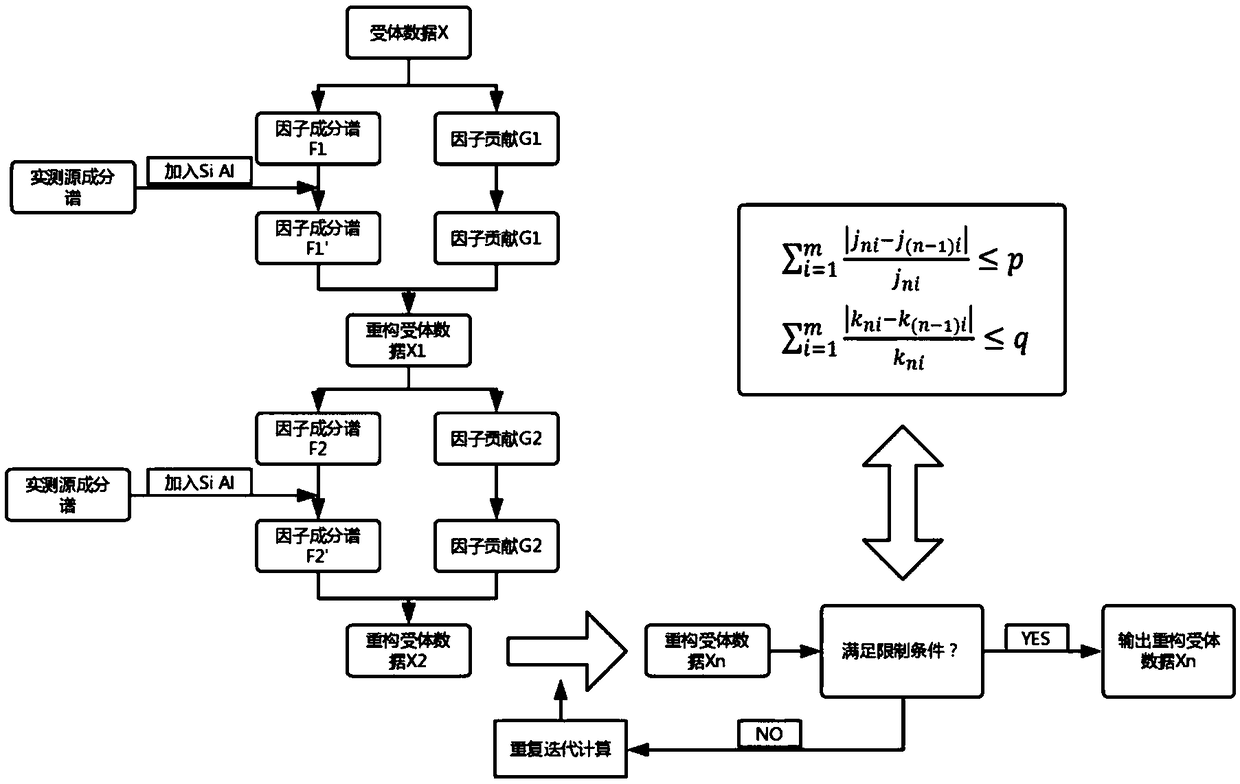Missing component iterative inversion calibration nesting-PMF source apportionment algorithm
An iterative inversion and source analysis technology, applied in the field of iterative inversion calibration nesting of missing components—PMF source analysis algorithm, which can solve the problems of increased source class collinearity, missing chemical components to identify components, etc., to improve accuracy performance, optimizing the effect of source parsing results
- Summary
- Abstract
- Description
- Claims
- Application Information
AI Technical Summary
Problems solved by technology
Method used
Image
Examples
Embodiment 1
[0030] See attached figure 1 , this example uses online monitoring data and factor analysis model for model calculation, the specific steps are as follows:
[0031] Step 1. Build factor analysis model input data. The input data is formed based on online monitoring data of particulate matter concentration and its chemical components monitored by different instruments, including water-soluble ions, carbon components, element concentrations, and particulate matter concentrations.
[0032] Measuring PM with Particulate Matter On-line Monitoring Instrument 2.5 concentration.
[0033] Carbon components, including OC and EC concentrations, were measured using a semi-continuous OC / EC instrument.
[0034] Measurement of water-soluble ions, including NH, using an online ion chromatography analyzer 4 + 、Na + , Mg 2+ 、K + , Ca 2+ , SO 4 2- , NO 3 - , Cl - and other concentrations.
[0035] Use the heavy metal online analyzer to monitor elements, including K, Ca, V, Cr, Mn, ...
Embodiment 2
[0067] See attached figure 1 , this example uses online monitoring data and factor analysis model for model calculation, the specific steps are as follows:
[0068] Step 1. Build factor analysis model input data. The input data include water-soluble ions, carbon components, element concentrations, and particle concentrations.
[0069] Measuring PM with Particulate Matter On-line Monitoring Instrument 2.5 concentration.
[0070] Carbon components, including OC and EC concentrations, were measured using a semi-continuous OC / EC instrument.
[0071] Measurement of water-soluble ions, including NH, using an online ion chromatography analyzer 4 + 、Na + , Mg 2+ 、K + , Ca 2+ , SO 4 2- , NO 3 - , Cl - and other concentrations.
[0072] Use the heavy metal online analyzer to monitor elements, including K, Ca, V, Cr, Mn, Fe, Co, Ni, Cu, Zn, Ga, As, Se, Ag, Cd, Sn, Sb, Ba, Au, Hg, Tl , Pb, Bi, etc. (the component category of each input data will change according to the act...
PUM
 Login to View More
Login to View More Abstract
Description
Claims
Application Information
 Login to View More
Login to View More - R&D Engineer
- R&D Manager
- IP Professional
- Industry Leading Data Capabilities
- Powerful AI technology
- Patent DNA Extraction
Browse by: Latest US Patents, China's latest patents, Technical Efficacy Thesaurus, Application Domain, Technology Topic, Popular Technical Reports.
© 2024 PatSnap. All rights reserved.Legal|Privacy policy|Modern Slavery Act Transparency Statement|Sitemap|About US| Contact US: help@patsnap.com










